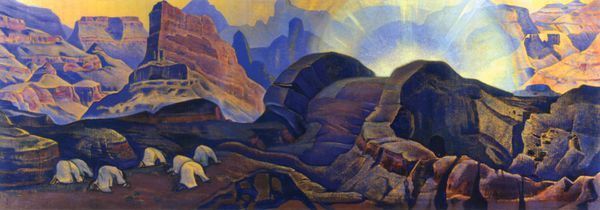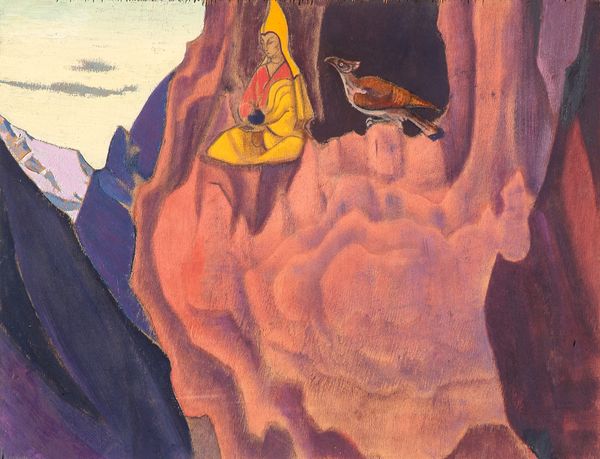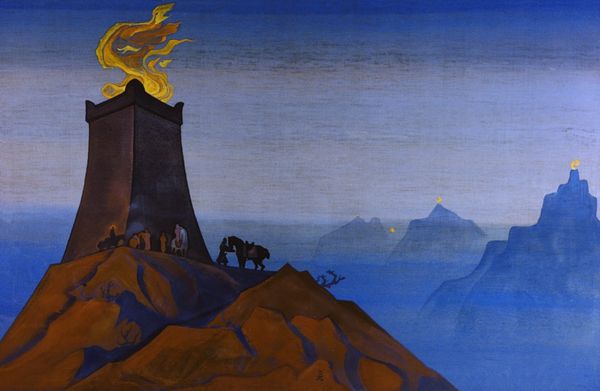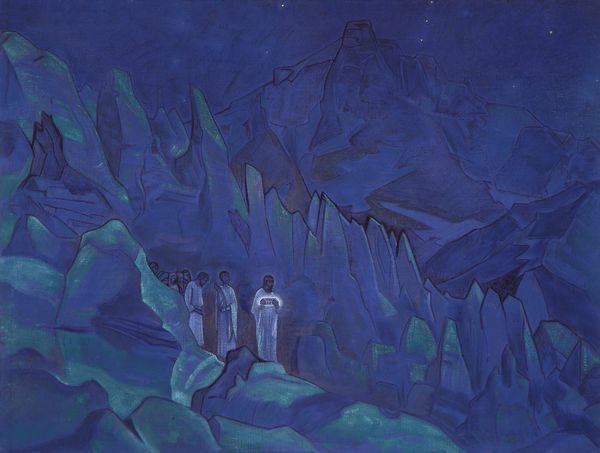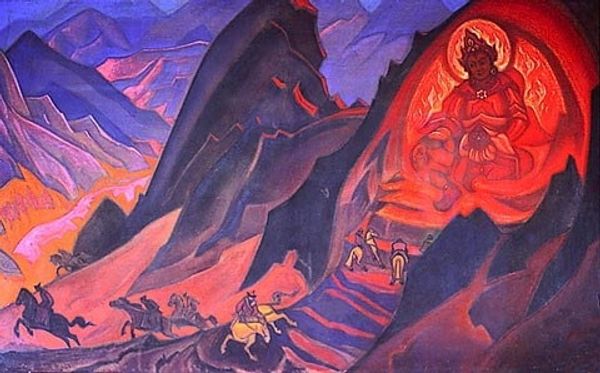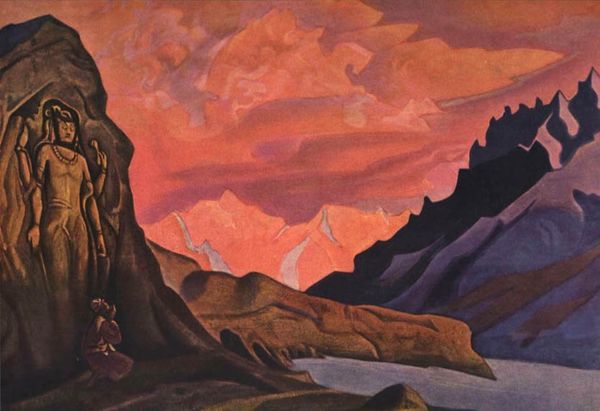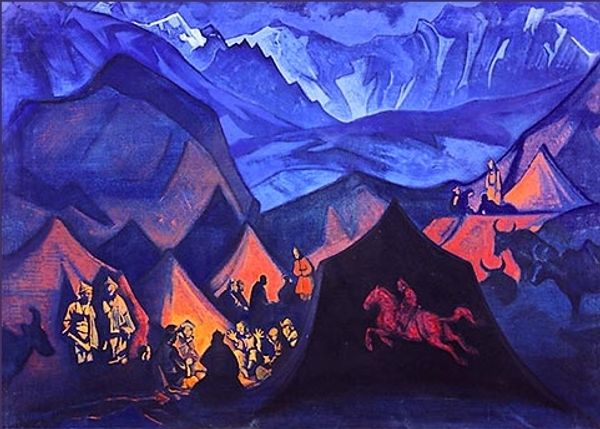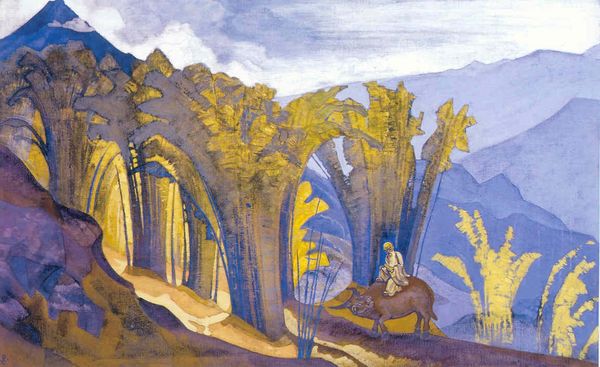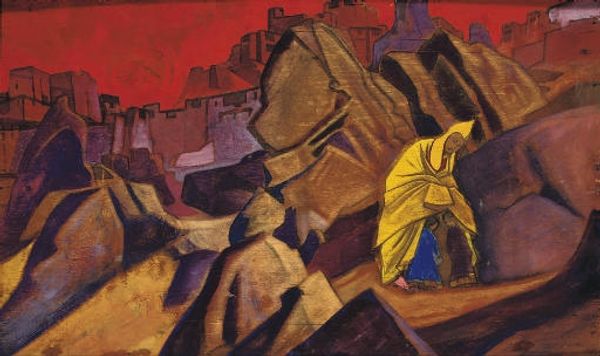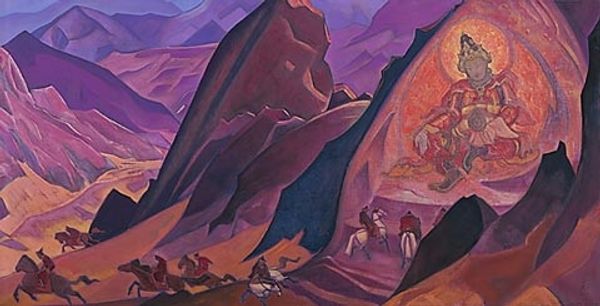
World's Treasure (Cintamani) 1924
0:00
0:00
nicholasroerich
Nicholas Roerich Museum, New York City, NY, US
Copyright: Public domain
Nicholas Roerich, a Russian artist, painted "World's Treasure" some time in the first half of the twentieth century. This evocative image presents us with an otherworldly scene, dominated by rugged mountains and a horse carrying a radiant object – the Cintamani stone. Roerich was deeply influenced by theosophy, a spiritual movement seeking universal wisdom. This work reflects that interest, drawing upon Eastern religious and philosophical traditions. The Cintamani, a mythical stone, symbolizes enlightenment and spiritual power, promising to those who possess it the fulfillment of wishes. The painting's symbolism is potent, but Roerich's work needs situating within a broader social context. The early 20th century saw a rise in spiritualism and esoteric movements, a rejection of Western materialism in favor of ancient wisdom traditions. Roerich's paintings, often depicting Himalayan landscapes and spiritual figures, resonated with those seeking alternatives to Western modernity. Understanding the context requires exploring the history of theosophy, Roerich's travels and writings, and the spiritual climate of the early 20th century. Art history isn't just about aesthetics; it’s about uncovering the complex social and intellectual worlds that give art its meaning.
Comments
No comments
Be the first to comment and join the conversation on the ultimate creative platform.
